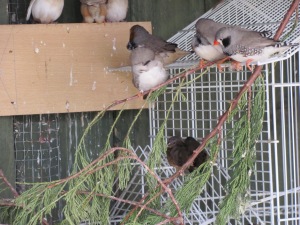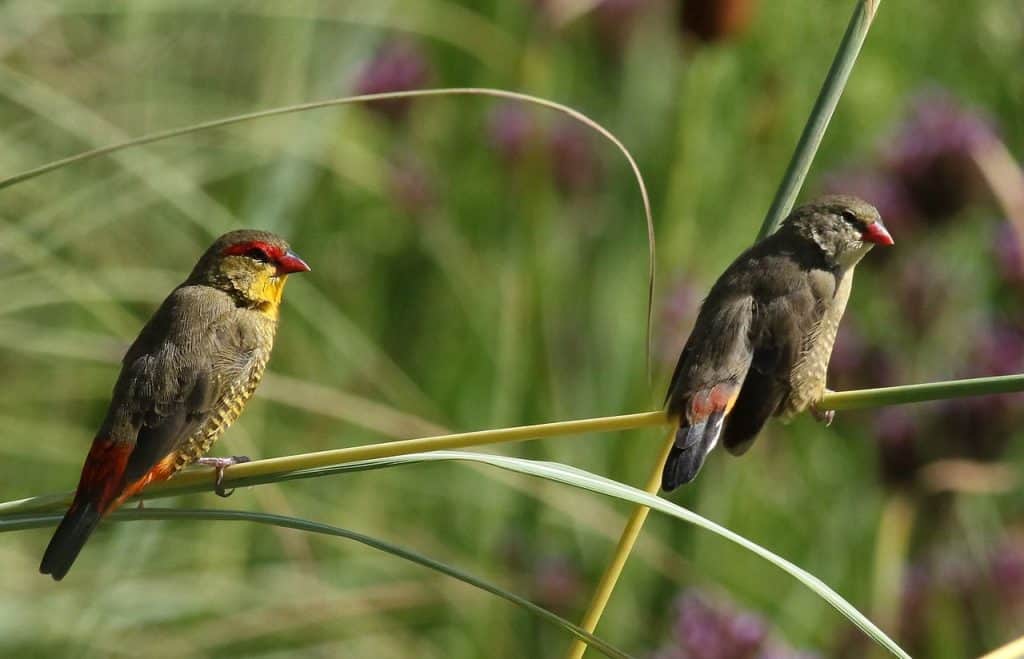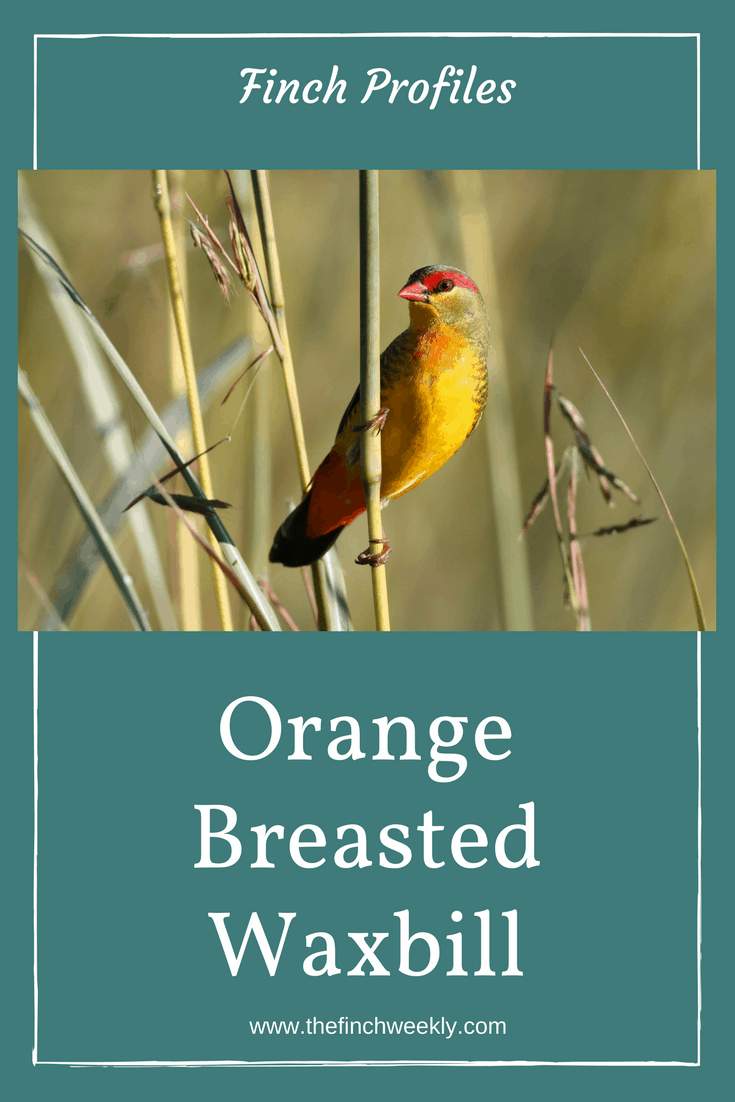The orange breasted waxbill is a tiny finch with a lot of names that are somewhat misleading. It does have an orange breast, even a gold breast as with its other name, the gold breasted waxbill. It is sometimes known as the Zebra waxbill, though I’m never quite sure why on what one. But whichever name it is known by, it technically isn’t a waxbill – it is actually a member of the Amandava family of Estrildid finches and its closest relative is the Strawberry finch.
Background
One fact is unshakeable – these little birds are the tiniest members of the Estrildid finch family at around 3.5 inches or 9cm. My pair have acquired the nicknames Teeny and Tiny because they are so much smaller than the other birds.

They are easy to sex visually as the cock bird is a lot brighter in his plumage than the hen is with a bright yellow-orange breast, a red flash across his face and olive green flanks. The hen has the same areas of colour but are overall much duller in shade.
Their natural environment is the grassland and savannahs of sub-Saharan Africa and the tip of the Arabian Peninsula as well as having been introduced into countries such as Kuwait. Here, their nests are often parasite by the red-collared widowbird and these tiny little waxbills raise the widowbird young. They live near to the ground around marshes, the border of streams and where reed and wet grassy areas are found. They use similar plants to construct their nests or will make use of the abandoned nest of another species if one is available. Out of breeding season, they live in small groups but when breeding, the males can become aggressive with each other so tend to live in pairs.
Keeping the orange breasted waxbill
There are two main consideration when thinking about buying these birds – size and heat. Their extreme miniature size means that bar spacing of greater than ½ inch will allow them to escape, especially the young who are naturally even smaller when first fledging. Secondly, while they are often acclimatised to our climate to some degree, they will need heating during the coldest parts of the year.
They do live well with others and will allopreen with other similar species. They can cross breed with species such as the Strawberry finch, the St Helena waxbill and the red-eared waxbill but if the pair are bonded before meeting these birds, the chance can reduce. Otherwise, monitoring is necessary to avoid unrequired crossings.
Feeding and breeding
The basic diet of these little birds is similar to other waxbill species – they enjoy a foreign finch mixture supplemented with egg food, millet spray and other seeds as well as green food and fruit. Access to grit or cuttlefish is important, as is access to both drinking and bathing water. Live food is required such as small mealworms or waxworms, particularly in the breeding season.

A well planted aviary is the best bet for successful breeding as not only do they like to hide, they can pick a suitable spot for their nest. The best option is to provide a number of nesting facilities and let them pick the one they like best – wicker nests, wooden finch boxes and even just areas that they can construct their own. They will make use of nesting materials such as coconut fibre, grass, hay and like to line it with white or pale feathers. When they do pick their spot, never look into their nest as this will usually lead to abandonment.
Between three and six eggs are laid and both parents share in incubation duties during the day, with the hen solely in charge at night. When the chicks hatch after 11-12 days, they have tufts of white down feathers and are fed on small insects and mealworms, progressing to green seeds, as they get older. They fledge at around 17-21 days and are a dull brown colour with orange tinging around the rump. They are then fed by the parents outside the nest for another week or two until fully weaned.

5